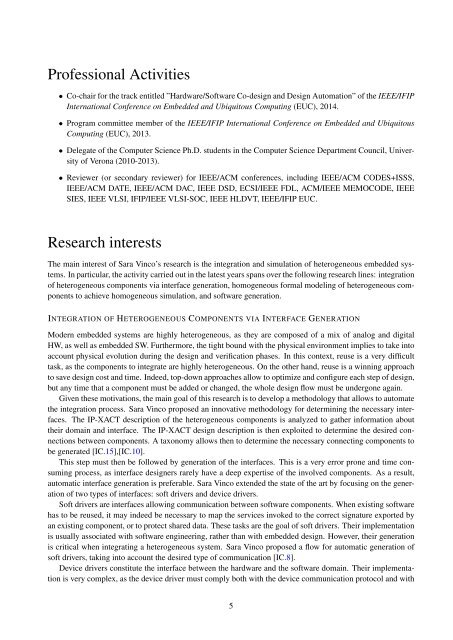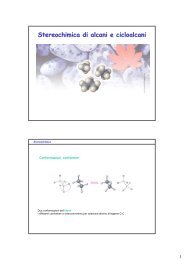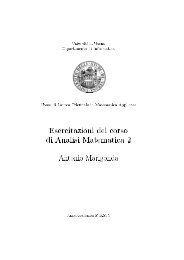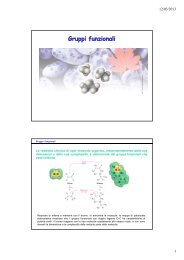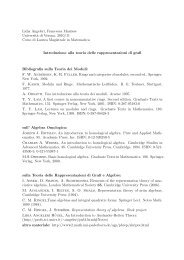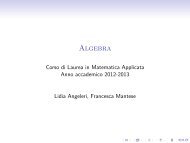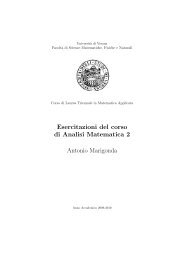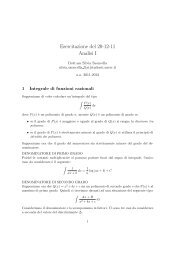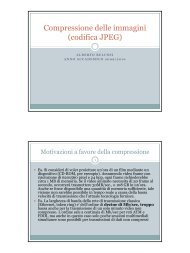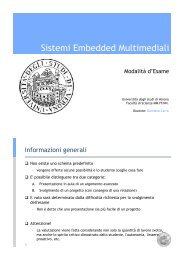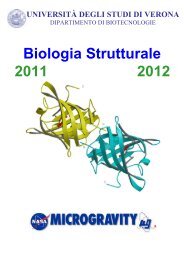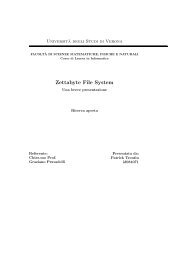Curriculum vitae (pdf, en, 50 KB, 10/23/13)
Curriculum vitae (pdf, en, 50 KB, 10/23/13)
Curriculum vitae (pdf, en, 50 KB, 10/23/13)
Create successful ePaper yourself
Turn your PDF publications into a flip-book with our unique Google optimized e-Paper software.
Professional Activities<br />
• Co-chair for the track <strong>en</strong>titled ”Hardware/Software Co-design and Design Automation” of the IEEE/IFIP<br />
International Confer<strong>en</strong>ce on Embedded and Ubiquitous Computing (EUC), 2014.<br />
• Program committee member of the IEEE/IFIP International Confer<strong>en</strong>ce on Embedded and Ubiquitous<br />
Computing (EUC), 20<strong>13</strong>.<br />
• Delegate of the Computer Sci<strong>en</strong>ce Ph.D. stud<strong>en</strong>ts in the Computer Sci<strong>en</strong>ce Departm<strong>en</strong>t Council, University<br />
of Verona (20<strong>10</strong>-20<strong>13</strong>).<br />
• Reviewer (or secondary reviewer) for IEEE/ACM confer<strong>en</strong>ces, including IEEE/ACM CODES+ISSS,<br />
IEEE/ACM DATE, IEEE/ACM DAC, IEEE DSD, ECSI/IEEE FDL, ACM/IEEE MEMOCODE, IEEE<br />
SIES, IEEE VLSI, IFIP/IEEE VLSI-SOC, IEEE HLDVT, IEEE/IFIP EUC.<br />
Research interests<br />
The main interest of Sara Vinco’s research is the integration and simulation of heterog<strong>en</strong>eous embedded systems.<br />
In particular, the activity carried out in the latest years spans over the following research lines: integration<br />
of heterog<strong>en</strong>eous compon<strong>en</strong>ts via interface g<strong>en</strong>eration, homog<strong>en</strong>eous formal modeling of heterog<strong>en</strong>eous compon<strong>en</strong>ts<br />
to achieve homog<strong>en</strong>eous simulation, and software g<strong>en</strong>eration.<br />
INTEGRATION OF HETEROGENEOUS COMPONENTS VIA INTERFACE GENERATION<br />
Modern embedded systems are highly heterog<strong>en</strong>eous, as they are composed of a mix of analog and digital<br />
HW, as well as embedded SW. Furthermore, the tight bound with the physical <strong>en</strong>vironm<strong>en</strong>t implies to take into<br />
account physical evolution during the design and verification phases. In this context, reuse is a very difficult<br />
task, as the compon<strong>en</strong>ts to integrate are highly heterog<strong>en</strong>eous. On the other hand, reuse is a winning approach<br />
to save design cost and time. Indeed, top-down approaches allow to optimize and configure each step of design,<br />
but any time that a compon<strong>en</strong>t must be added or changed, the whole design flow must be undergone again.<br />
Giv<strong>en</strong> these motivations, the main goal of this research is to develop a methodology that allows to automate<br />
the integration process. Sara Vinco proposed an innovative methodology for determining the necessary interfaces.<br />
The IP-XACT description of the heterog<strong>en</strong>eous compon<strong>en</strong>ts is analyzed to gather information about<br />
their domain and interface. The IP-XACT design description is th<strong>en</strong> exploited to determine the desired connections<br />
betwe<strong>en</strong> compon<strong>en</strong>ts. A taxonomy allows th<strong>en</strong> to determine the necessary connecting compon<strong>en</strong>ts to<br />
be g<strong>en</strong>erated [IC.15],[IC.<strong>10</strong>].<br />
This step must th<strong>en</strong> be followed by g<strong>en</strong>eration of the interfaces. This is a very error prone and time consuming<br />
process, as interface designers rarely have a deep expertise of the involved compon<strong>en</strong>ts. As a result,<br />
automatic interface g<strong>en</strong>eration is preferable. Sara Vinco ext<strong>en</strong>ded the state of the art by focusing on the g<strong>en</strong>eration<br />
of two types of interfaces: soft drivers and device drivers.<br />
Soft drivers are interfaces allowing communication betwe<strong>en</strong> software compon<strong>en</strong>ts. Wh<strong>en</strong> existing software<br />
has to be reused, it may indeed be necessary to map the services invoked to the correct signature exported by<br />
an existing compon<strong>en</strong>t, or to protect shared data. These tasks are the goal of soft drivers. Their implem<strong>en</strong>tation<br />
is usually associated with software <strong>en</strong>gineering, rather than with embedded design. However, their g<strong>en</strong>eration<br />
is critical wh<strong>en</strong> integrating a heterog<strong>en</strong>eous system. Sara Vinco proposed a flow for automatic g<strong>en</strong>eration of<br />
soft drivers, taking into account the desired type of communication [IC.8].<br />
Device drivers constitute the interface betwe<strong>en</strong> the hardware and the software domain. Their implem<strong>en</strong>tation<br />
is very complex, as the device driver must comply both with the device communication protocol and with<br />
5


